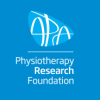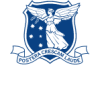Evaluating the effectiveness of home exercise programs using an online exercise program in children with cerebral palsy: protocol for a randomized controlled trial
Abstract
Introduction Children with cerebral palsy (CP) and other neurodevelopmental disorders are often given an exercise program to take home to help them achieve their therapy goals. Adherence to exercise programs is necessary to achieve the level of exercise needed to reach goals; however, adherence can be difficult to achieve. In this article, we describe the protocol for a randomized controlled trial to evaluate the effectiveness of providing a home exercise program to school-aged children with disabilities using Physitrack, an online exercise program with a website or app interface.
Methods and analysis
Participants aged between 6 and 17 years with CP or other neurodevelopmental disorders, receiving physical therapy services in Western Australia, will be recruited. Participants will be stratified by age and functional mobility and randomized to either the intervention group, which will follow an 8-week home exercise program using Physitrack, or the control group, which will follow an 8-week exercise program without Physitrack. Blinding of group assignment by the investigator and blinding of outcome by participants will be maintained. Primary outcome measures are adherence to the home exercise program with weekly collection of home exercise logs; achievement of individualized goals by telephone interview before and after the intervention; and correctness of exercise performance by collection and analysis of videos of participants performing home exercises. Secondary outcome measures include enjoyment of physical activity, confidence to complete the exercise program, preferred method of implementing the program, and usability of Physitrack. A sample size of 58 participants is needed to see an effect on adherence to the home program. Data will be analyzed according to the intention-to-treat principle.
Ethics and dissemination
Ethics and disseminationEthical approval was obtained from the Curtin University Human Research Ethics Committee in July 2016 (10391).
Results will be disseminated through publication in peer-reviewed journals and presentations at scientific conferences.Trial registration number ACTRN12616000743460; Pre-results.
This is an Open Access article distributed in accordance with the Creative Commons Attribution Not Commercial (CC BY-NC 4.0) license, which allows others to distribute, remix, adapt, build upon this work noncommercially, and license their derivative works on other terms, provided the original work is properly cited and the use is noncommercial. See: http://creativecommons.org/licenses/by-nc/4.0/ and http://dx.doi.org/10.1136/bmjopen-2017-018316
Rowan W Johnson, Sian A Williams, Daniel F Gucciardi, Natasha Bear, Noula Gibson
BMJ Open

Whitepaper: Telehealth by physiotherapists in Australia during the COVID-19 pandemic
The research study was developed with input from clinicians, digital care experts, business owners and funding agencies to evaluate the effectiveness and value of physical therapy treatments via video consultation during the COVID-19 pandemic.
The project measured the following objectives:
– the characteristics of physical therapists who implemented telehealth services
– the nature of the services
– the types of patients who used telehealth physical therapy services
– the types of conditions treated and their management
– patient outcomes and experiences
– characteristics of the consultation
This information will be used to advocate for continued
funding of telehealth services by physical therapists. The
is a cross-sectional online survey with ethical approval
obtained through the University of Melbourne.
APA Foundation for Physical Therapy Research.
Whitepaper

Whitepaper: Opportunities for Telehealth and Physical Therapy: What a new patient survey reveals
Bay State Physical Therapy, leading provider of physical therapy care in the northeastern U.S., used Physitrack Telehealth (PTT) and patient engagement systems to stay in touch with their patients during the Covid-19 global pandemic – with great success.
Within days, Physitrack was able to set up and train all BSPT treatment providers on how to use Telehealth. By mid-March, BSPT was 100% virtual – using Physitrack’s award-winning technology and patient apps.
You can read more about the research conducted in this published study, which highlights the objective success BSPT has had with PTT and virtual care.
Bay State Physical Therapy
Whitepaper
Effectiveness of physical therapy with telerehabilitation in surgical patients: a systematic review and meta-analysis
Background: In recent years, telerehabilitation services have developed rapidly, and patients appreciate benefits such as reduced travel barriers, flexible practice times, and the ability to better integrate skills into daily life. However, the effects of physical therapy with telerehabilitation on postoperative functional outcomes compared to usual care in surgical populations are still inconclusive.
Objectives: To investigate the effectiveness of physical therapy with telerehabilitation on postoperative functional outcomes and quality of life in surgical patients.
Data sources: Relevant studies were obtained from MEDLINE, EMBASE, CINAHL, the Cochrane Library, PEDro, Google Scholar and the World Health Organization International Clinical Trials Registry Platform.
Selection of studies: Randomized controlled trials, controlled clinical trials, quasi-randomized trials, and quasi-experimental trials with comparative controls were included without restrictions on language or date of publication.
Data extraction and synthesis: methodological quality was assessed using the Cochrane risk of bias tool. Twenty-three cases were included for qualitative synthesis. Seven studies were eligible for quantitative synthesis on quality of life, and the overall pooled standardized mean difference was 1.01 (95% confidence interval 0.18 to 1.84), indicating an increase in favor of telerehabilitation in surgical patients.
Limitations: The diversity in content of intervention and outcome measures limited the performance of a meta-analysis on all clinical outcome measures.
Conclusions: Physical therapy with telerehabilitation has the potential to increase quality of life, is feasible, and is at least as effective as usual care in surgical populations. This may be sufficient reason to choose physical therapy with telerehabilitation in surgical populations, although the overall effectiveness on physical outcomes remains unclear. PROSPERO registration number: CRD42015017744.
Keywords: Exercise; Functional status; Physiotherapy; Surgery; Telehealth; Telemedicine; Telerehabilitation.
Copyright © 2018 Chartered Society of Physiotherapy. Published by Elsevier Ltd. All rights reserved.
Maarten A van Egmond, Raoul H H Engelbert, Jean H G Klinkenbijl, Mark I van Berge Henegouwen, Marike van der Schaaf # 1 2
PubMed

Comparing the results of virtual and in-person treatment
Background
A comparative observational study was conducted using data collected from routine care provided by qualified Ascenti physiotherapy practitioners. Patients involved in the study were referred to Ascenti for a range of needs.
The study involved exporting anonymised data that mapped the treatment journeys of 27,096 patients who had accessed virtual physiotherapy support before and during the Covid-19 crisis – running up until 10 June 2020. Of this population, 9,506 had received virtual-only treatment, while 17,590 had received a mix of virtual and face-to-face care.
A control group was then built using the data of 6,226 patients who had been treated with in-person physiotherapy only.
Resultaten
Measured on a 10-point pain Numerical Rating Scale (NRS) all patient groups saw significant reductions in their levels of pain following treatment, regardless of what type of treatment they accessed and regardless of the severity of their injury or condition.
In the population-level analysis, patients that combined face-to-face treatment with virtual sessions delivered through the app saw the biggest improvements, moving from a 5.4 NRS score at initial assessment to 1.8 at discharge – an improvement of 3.6 points on average. Patients who only accessed face-to-face treatment reduced their pain by 3.4 points on average, while people who were treated virtually and didn’t see a physio in-person improved by an average of 3.1 points.
Ascenti
Ascenti

A proximal progressive resistance training program focused on strength and power is feasible in people with patellofemoral pain
Objectives:
To evaluate the feasibility of a 12-week progressive resistance training program for people with patellofemoral pain (PFP) targeting proximal muscle strength and power; and the resulting clinical and muscle capacity outcomes.
Main outcome measures:
Feasibility outcomes were: eligibility, recruitment rate, adherence, and dropout. Secondary outcomes were: perceived recovery, physical function (AKPS and KOOS-PF), worst pain (VAS-cm), kinesiophobia (Tampa), physical activity (IPAQ), and hip strength (isometric and 10 repetitions maximum) and power.
Results:
Eleven people, out of 36 who responded to the ads, started the program. One participant withdrew. Ten participants who completed the program reported improvement (3 fully recovered; 6 marked; and 1 moderate). Higher AKPS (effect size [ES] = 1.81), improved KOOS-PF (ES = 1.37), and decreased pain (ES = 3.36) occurred in addition to increased dynamic strength for hip abduction and extension (ES = 2.22 and 1.92, respectively) and power (ES = 0.78 and 0.77, respectively). Isometric strength improved for hip abduction (ES = 0.99), but not for hip extension.
Conclusion
A 12-week progressive resistance training program targeting proximal muscle strength and power is feasible and associated with moderate-sized improvements in pain, function, and hip muscle capacity in people with PFP. Further research into the efficacy of progressive resistance training is warranted.
Christian J. Barton, Danilo de Oliveira Silva, Brooke E. Patterson, Kay M. Crossley, Tania Pizzari, Guilherme S. Nunes

PaTIO: Physiotherapeutic Treat-to-target Intervention after Orthopaedic surgery; a cost-effectiveness study
Background
Physical therapy is a proven effective treatment strategy after total knee and hip arthroplasty (TKA/THA), but there is considerable practice variation in terms of timing, content and duration. This study aims to compare the (cost) effectiveness of a standardized, treat-to-target postoperative physical therapy strategy with usual postoperative care.
Methods
Using a cluster randomized study design, consecutive patients scheduled for a primary TKA/THA at 18 hospitals in the Netherlands will be assigned to the treat-to-target physical therapy strategy or usual postoperative care. The treat-to-target strategy involves a standardized, individually tailored, exercise program aimed at achieving specific functional milestones. Evaluations take place at baseline, 6 weeks and 3, 6, 9 and 12 months of follow-up. The primary outcome is the Knee Injury / Hip Disability and Osteoarthritis Outcome Score – Physical Function Short Form (KOOS-PS / HOOS-PS) at 3-month follow-up. Secondary outcomes are the numeric rating scale for pain, the Oxford Knee and Hip Scores, performance test and the EuroQol 5D-5L for quality of life. Health care utilization, productivity and satisfaction with postoperative care will be measured by questionnaires. A total of 624 patients will be required, including 312 TKA and 312 THA patients.
Discussion
The study will provide evidence for the (cost) effectiveness of treat-to-target postoperative physical therapy treatment compared to usual postoperative care. The results of this study will address an important gap in the evidence base and will have a significant impact on the physical therapist’s daily practice.
Trial Registration
Registered in the Dutch Subject Register on April 15, 2018. Registration number: NTR7129.
Groot, Gademan, Peter, Van den Hout, Verburg, Vliet Vlieland, Reijman and on behalf of the PaTIO study group.
Pubmed

Patient AdhereNce To Home Exercise pRograms (PANTHER)
Exercise is an integral component of the conservative management of most musculoskeletal conditions. However adherence to exercises is often low and this impacts on treatment effectiveness. The aim of this randomized controlled trial is to evaluate whether the addition of a web-based system, Physitrack, to usual physiotherapy treatment improves patient adherence levels to exercises compared to the usual non web-based methods physiotherapists use to deliver exercise programs to people with musculoskeletal conditions.
PANTHER was a two-year University of Melbourne study comparing exercise prescription via Physitrack with paper handouts and its effect on patient adherence and other outcomes.
Conclusions: A Web-based system for programming exercises improved adherence and confidence in the ability to perform exercises, although the clinical relevance of the results remains to be determined.
Prof Kim Bennell, Prof Rana Hinman, Dr Fiona Dobson, Mrs Charlotte Marshall
PubMed

Implementing a web based and mobile application exercise prescription programme in Fracture Clinic at St Thomas’ Hospital
With over 2 million patient contacts each year, GSTT is one of the busiest NHS trusts in the UK. The Fracture Clinic set out to establish patient exercise adherence and staff satisfaction with the use of Physitrack in treating Achilles tendon ruptures, anterior glenohumeral joint dislocations, Weber A ankle fractures and distal radius fractures.
Jack Grodon, Senior Specialist MSK Physical Therapist

Engagement with digital exercises
Implementation of a web and smartphone based exercise program in MSK Physiotherapy.
St George’s serves a population of 1.3 million patients in southwest London. To help the team manage an ever-growing caseload, St George’s initiated a study of engagement with a digital exercise prescription versus paper-based programs.
Patients who used the digital platforms adhered better to exercises than patients who used a paper version.
You can see the presented poster here:
https://www.dropbox.com/s/lztj7mzl9hughqm/Physiouk%20poster%202017%203.pdf?dl=0
B Wanless, St. George’s University Hospital NHS Trust, London.

PhysioFIRST
PhysioFIRST is an assessor and participant blinded randomised controlled trial comparing the effectiveness of two physiotherapy interventions for hip pain (FAI) in adults aged 18-50 years. The physitrack app is being used to deliver the exercise interventions to participants in both groups, and to track adherence to the exercise interventions.


Charles Sturt University
A study in partnership with NSW Ambulance to investigate the effects of different types of exercise training on a range of cardio-metabolic and musculoskeletal health outcomes in regional and rural paramedics.

Physio Future Lab
For the Physio Future Lab, a group of innovative physical therapists test technological applications in daily practice. Through short questionnaires and interviews, usability, applicability and physical therapy added value are worked out for each application. These pilot studies focus on both therapist and patient perspectives. In addition, it is possible for both patients and physical therapists to answer a short questionnaire around technology applications that are already being used. Physitrack was used in the first pilot study.


Snel@Home
FAST @ HOME aims to enable therapy after stroke at home through a compilation of already existing interventions. Based on the wishes of health professionals, patients and caregivers, several existing and validated interventions will be combined in a digital environment.
An impact study with 150 rehabilitators will examine the effectiveness of this platform: “To what extent has the quality of care improved as a result of digital support for home rehabilitation of CVA patients?” This question will be answered from the patient’s perspective and from the caregiver’s perspective.

FASHIoN
This study focuses on the delivery of physiotherapy and dietitian interventions remotely to measure cost-effectiveness and outcomes of remote health interventions for patients with chronic conditions. Physitrack is used to deliver the exercise interventions and educational content to participants, track adherence to the exercise interventions and have video calls with patients.
Murphy, Eyles, Bennell et al.
PDF article


HIPARTI
Through a global collaboration, HIPARTI aims to determine the efficacy of hip arthroscopic surgery compared to a sham surgery (diagnostic arthroscopy only) for patients with symptomatic and radiological findings related to impingement (FAI) and/or labral tears using a randomized controlled design. Physitrack is used to deliver standardised exercise programs and collect outcomes data for analysis.


Project VEERKRACHT
The VEERKRACHT project focuses on the development of a physical therapy intervention for women with metastatic forms of breast cancer. The goal is to increase fitness and well-being to maintain or improve quality of life.


Flitz!-project
Purpose: The purpose of this study was to evaluate the feasibility and preliminary effects of a multicomponent intervention to reduce sedentary time during and shortly after hospitalization.
Design: This is a quasi-experimental pilot study comparing outcomes of patients admitted before and after the introduction of the intervention.
Setting: The study was conducted in a university hospital.
Subjects: Participants were adult patients undergoing elective organ transplantation or vascular surgery.
Interventions: In the control phase, patients received usual care, while in the intervention phase, patients also received a multicomponent intervention to reduce sedentary time. The intervention consisted of eight elements: paper and digital information, an exercise video, an activity planner, an apedometer and Fitbit Flex™, a personal activity coach and an individualized digital exercise program.
Measurements: Measures of feasibility were self-reported use of the intervention items (yes/no) and satisfaction (low-high = 0-10). The primary outcome measure was median % sedentary time measured by an accelerometer worn during hospitalization and 7-14 days thereafter.
Results: A total of 42 controls (mean age = 59 years, 62% male) and 52 intervention patients (58 years,52%) were included. The exercise film, paper information and Fitbit Flex were the three most commonly used components, with the highest satisfaction scores for the fitbit, paper information, exercise film and digital training. Median sedentary time decreased from 99.6% to 95.7% and from 99.3% to 91.0% between Day 1 and 6 in patients included in the control and intervention phases, respectively. The difference on Day 6 reached statistical significance (difference = 41min/day, P=0.01). No differences were observed after discharge.
CONCLUSION: Implementing a multicomponent intervention to reduce sedentary time proved feasible and may be effective during but not immediately after hospitalization.
Conijn, Van Bodegom-Vos, Volker, Mertens, Vermeulen, Huurman, Van Schaik, Vliet Vlieland & Meesters
Published Article


Ability Centre
A randomised controlled trial to evaluate the effectiveness of delivering a home exercise programme to school-age children with disabilities (cerebral palsy) using Physitrack.


GAP4
INTRODUCTION: Preliminary evidence supports the beneficial role of physical activity on prostate cancer outcomes. This phase III randomized controlled trial (RCT) was designed to determine whether supervised high-intensity aerobic and resistance exercise increases overall survival (OS) in patients with metastatic castrate-resistant prostate cancer (mCRPC).
METHODS AND ANALYSIS: Participants (n=866) must have histologically documented metastatic prostate cancer with evidence of progressive disease on androgen deprivation therapy (defined as mCRPC). Patients may be treatment-naïve for mCRPC or on first-line androgen receptor-targeted therapy for mCRPC (i.e., abiraterone or enzalutamide) with no evidence of progression at enrollment, and no prior chemotherapy for mCRPC. Patients will receive psychosocial support and will be randomly assigned (1:1) to either supervised exercise (high-intensity aerobic and resistance training) or self-directed exercise (providing guidelines), stratified by treatment status and location. Exercise prescriptions will be tailored to each participant’s fitness and morbidities. The primary endpoint is OS. Secondary endpoints are time to disease progression, occurrence of a skeletal-related event or progression of pain, and degree of pain, opiate use, physical and emotional quality of life, and changes in metabolic biomarkers. It will be examined whether immune function, inflammation, dysregulation of insulin and energy metabolism, and androgen biomarkers are associated with OS, and whether they mediate the primary association between exercise and OS will also be examined. This study will also establish a biobank for future biomarker discovery or validation.
ETHICS AND REVIEW: The validation of exercise as a drug and its mechanisms of action will create evidence to change clinical practice. Accordingly, the results of this RCT will be published in international, peer-reviewed journals, and presented at national and international conferences. Ethical approval was first obtained at Edith Cowan University (ID: 13236 NEWTON), with an additional 10 research sites since receiving ethical approval, prior to activation.
TRIAL REGISTRATION NUMBER: NCT02730338.
Dimensions

